Make Your Message Matter: Breaking through the Clutter
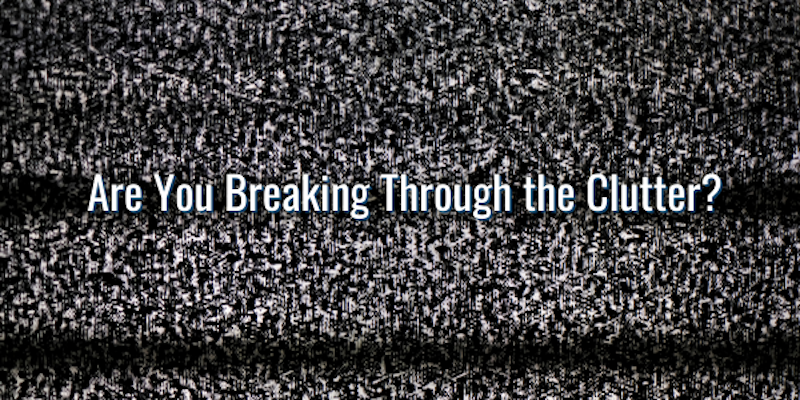
Key Takeaways:
- Create a connection with your audience before you try to persuade or sell.
- Frame a distinct choice to separate your message from the competition.
- Make it easy for customers, clients, or prospects to engage with you.
It’s beginning to look a lot like… marketing mayhem!
December is here. Between promotions for Early Black Friday, actual Black Friday, Extended Black Friday, Plaid Friday, Shop Local Saturday, Cyber Monday, and Giving Tuesday, most of us are already exhausted from the latest ad campaigns for clothing retailers, jewelers, sporting goods stores, and more.
On top of that, charitable organizations of every stripe are sending end-of-the-year appeals that tug at our heartstrings and our wallets. Some of these campaigns are fantastic. Others are, well, just plain annoying (looking at you, weird toboggan commercial lady).
The average American consumer is exposed to thousands of marketing messages every single day. I’m pretty sure that number quadruples in the last few weeks of the calendar year. How can you make sure that your organization’s marketing efforts don’t get lost in the everyday (or the holiday) noise?
Here are a few tips:
Connect with your audience.
Think about some of those thousands of marketing messages you’re exposed to every day. Which ones do you remember? The ones that connected with you. Maybe it was a story that drew your attention, an experience you shared, or simply a well-placed and well-timed message.
Remember, this doesn’t mean soulless AI-generated content. We’re trying to talk to humans, not robots. Nor does it mean a 10,000-word article trying to connect with busy working parents, although a funny meme or quick bullet point email might work for them!
Cutting through the clutter means creating a connection with your audience, and meeting them where they are with a message that matters to them.
Sell the outcomes and results.
Features, advantages, and benefits don’t get the job done here. If you want to get the attention of your audience, you need to convey the results or the improvement your product or service delivers.
Theodore Levitt of the Harvard Business School famously said, “people don’t buy a quarter-inch drill bit, they buy a quarter-inch hole.” One could go even further and say that people aren’t just buying a quarter-inch hole, they’re buying a way to hang a picture or put up a shelf.
Make it clear to your audience that choosing you will make their lives better, easier, or more convenient.
Draw a contrast and frame the choice.
This is one of the most important things we see missing from most communications. Every organization is competing–for customers, clients, donors, or simply attention and awareness.
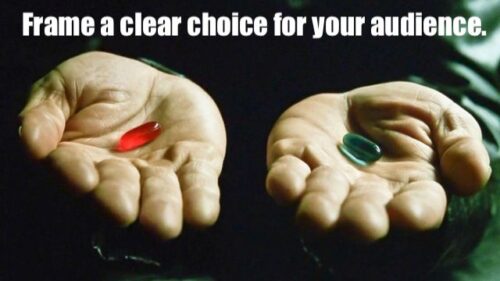
Even if you’re not in a robust competitive market, you can still draw a contrast with the status quo, or create a contrast with the cost of taking no action at all. FOMO (Fear Of Missing Out) is real, and your communications should frame a distinct choice for your audience.
Give your audience a clear call to action.
If you’ve connected with your audience, conveyed how you can improve their lives, and framed a choice for them, the next step is to give them a clear action to take. There’s nothing worse than delivering a creative, compelling campaign and leaving your audience hanging.
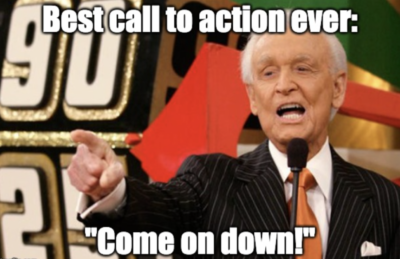
Make sure you have a clear call to action—whether that’s to sign up for the email list, scan the QR code, buy that new smoker-grill combo, or click the donate button. Don’t let your audience have to guess their next step. Show it to them and make it as easy as possible to do it.
Deliver your message consistently.
Finally, given the massive amount of marketing and advertising noise the average person experiences, smart communicators should create multiple opportunities for audiences to engage with your brand or organization.
Regardless of how amazing your product, service, or cause might be, you are still competing for attention with literally thousands of other brands or advertisers. Make sure you give your communications enough repetition, across enough channels, to motivate your audience and make a difference for your organization.
Start planning now for the future.
Whether you’re putting the finishing touches on an end-of-the-year campaign, or working on your communications plan for the next year, these tips can guide you to successful outcomes. Over the years, we’ve found that these communications tips hold true across different industries, causes, channels, demographic groups, and cultures.
At Impact Campaigns, we use this framework to help community, advocacy, corporate, and political organizations succeed. If you’d like to learn more, or want to talk about your communication plans for next year, we’d be happy to chat.
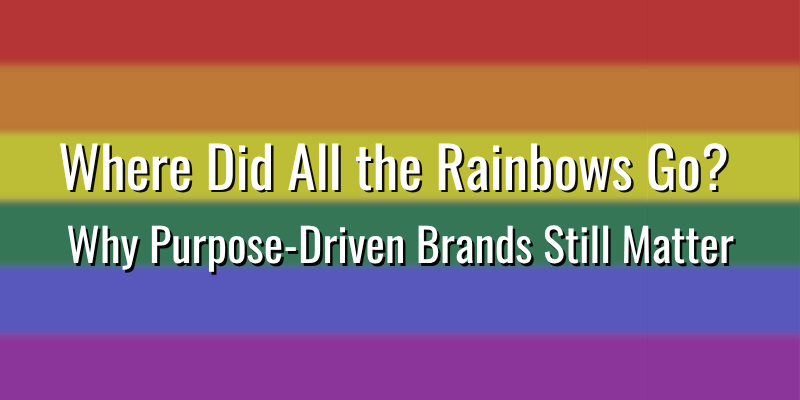
Key Takeaways:
Navigating the current political and social environment creates business and communication challenges for many organizations.
Staying consistent with your mission and values builds trust and resilience in the face of tough social issues.
Organizations that engage in social or civic advocacy should be prepared to weather the storm and stay committed.
If you’ve noticed fewer rainbow logos and less corporate fanfare around Pride Month this year, it’s not your imagination. As political pressure and public scrutiny rise, many organizations are quietly pulling back from public support of LGBTQ+ and other social causes.
This shift reflects a broader trend: fewer companies are speaking out on social issues, not just during Pride, but across the board. Yet, silence isn’t always the safest path. In fact, it can make brands seem disconnected or indifferent.
So, how should organizations show up in moments like these? It starts with being intentional and authentic.
Here’s how.
Align Purpose With People
Don’t jump on a cause because it’s trending. The strongest companies choose issues that genuinely align with their mission and matter to their customers, employees, and communities.
Take Patagonia, for example. Its commitment to the environment isn’t just talk—they donate 1% of sales to climate efforts. In addition, they have an entire section of their website devoted to environmental activism. Their customers care deeply about protecting the outdoors, so this alignment builds trust and brand loyalty.
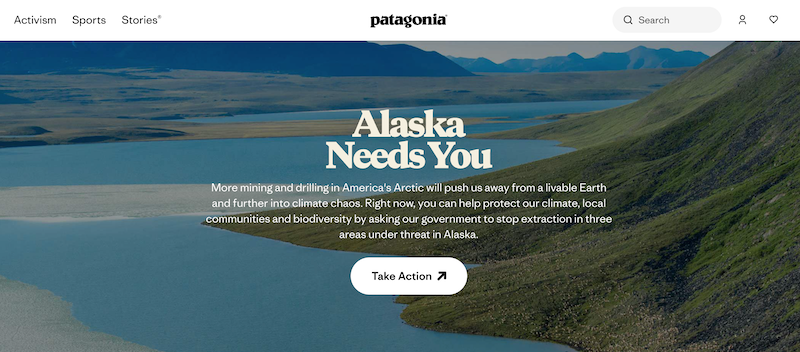
The takeaway: Choose values that naturally align with your identity and audience. That’s when social engagement feels real, not forced.
Be Consistent, Not Convenient
If you take a stand, stick to it—even when it’s tough.
In 2023, Target faced backlash over its Pride Month merchandise. When the company pulled products to quiet critics, it ended up upsetting everyone. In January 2025, Target announced it would scale back its DEI efforts, sparking a boycott and major losses in trust, foot traffic, and revenue—reportedly over $12 billion in valuation.
In contrast, Costco stayed consistent in its support for diversity and saw customer visits rise.
The lesson? Customers respect brands that stand firm in their values.
Act with Consistency, Not for Attention
You don’t need a viral moment to make a real difference. Some of the most impactful work—like mentoring, local partnerships, or internal support groups—happens quietly behind the scenes.
On the other hand, inconsistency can be costly. Take Tesla: public actions and rhetoric from its CEO have alienated many customers, resulting in sharp declines in sales worldwide.
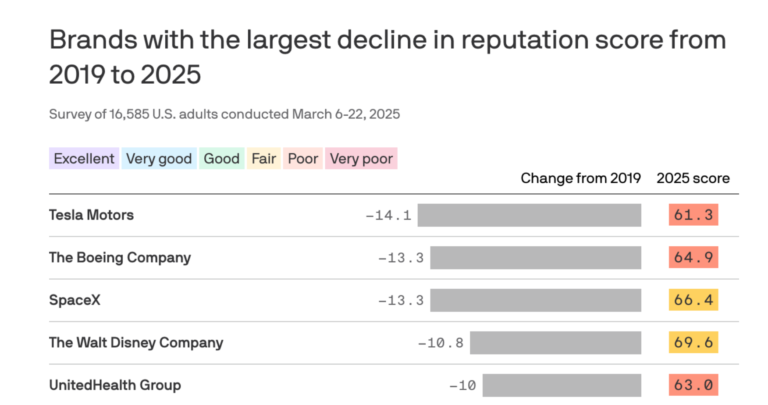
It’s not about being loud—it’s about showing up consistently in ways that reflect your values.
Small Steps Still Count
Sometimes the most meaningful actions are the quietest. Simple things, such as sharing educational resources, updating email signatures during awareness months, or recognizing important cultural moments, can help build a more inclusive workplace.
Ben & Jerry’s is a great example. Since its inception, the company has consistently linked its business to social causes, ranging from environmental action to racial justice. Their foundation even includes employees in grant decisions, showing that their values aren’t just talk.
Why does it work? Because it’s real. People notice when companies walk the walk.
Bottom Line: Start With Substance
Before making a statement, ask yourself:
- Does this align with who we are?
- Will we stay committed even if it gets hard?
- Can we back this up with real action?
If the answer to any of those is “no,” take a step back and focus on finding your authentic voice. In today’s landscape, thoughtful consistency will take you further than jumping on the latest bandwagon cause.
Because in the end, people remember who stays committed when it’s hard—not just who speaks up when it’s easy.
Is your organization struggling to find the right way to talk about or engage on important social issues? Hit us up at the link below and let’s talk.


